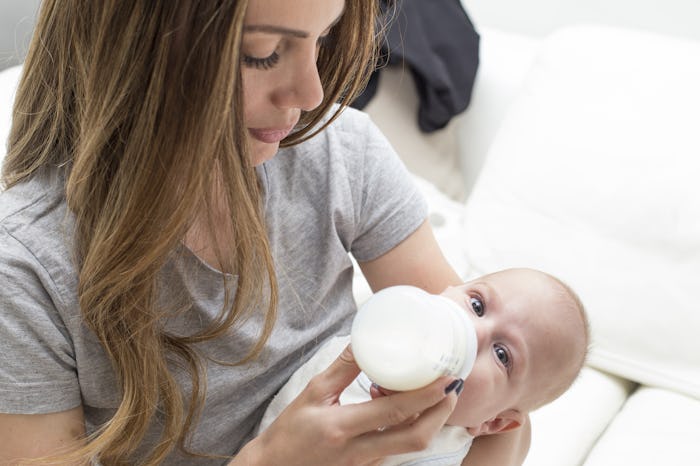Life

How Warm Should Breast Milk Be?
One of the great things about breastfeeding is that, once you get the hang of it (barring any other issues), you can pretty much set yourself on cruise control and let your baby eat while you sit in quiet bliss, scroll through your social media feeds, or catch up on Netflix. But that's not the case with pumped milk. Although it gives your baby all the same nutritional benefits (it is your breast milk after all,) it requires a little more thought than simply setting your mind on cruise control. Like how warm should breast milk be when you heat it up? Where are those damn nipple thingies for the bottle? And how in the world are you supposed to juggle a crying baby while patiently waiting for the milk to warm up? It's all a very delicate balance, but one that isn't impossible to strike. Ask any pumping mama out there.
When it comes to heating up your breast milk, it's a technique very similar to formula feeding. According to Medela, breastmilk should be about at room temperature which is anywhere from 66 to 78 degrees. It shouldn't feel cold, but definitely shouldn't feel hot to the touch.
Whether your milk has been frozen or cooled in the fridge, it's important that you don't microwave your breast milk to thaw it, according to Parents. Instead, move it to the fridge to thaw overnight, or, if you need it right away, sit it in a bowl of hot water or run it under the hot water in your sink. Microwaving your milk, Parents noted, can overheat the milk both "destroying the enzymes and immune properties" and posing the risk of burning the baby. Always test the milk first, using your clean finger or wrist to make sure it's not too hot.
Although pumping your breast milk requires a few extra steps, for some moms it's well worth the extra effort. And at the end of the day, your baby is still getting that liquid gold (properly warmed to the correct temperature, of course).